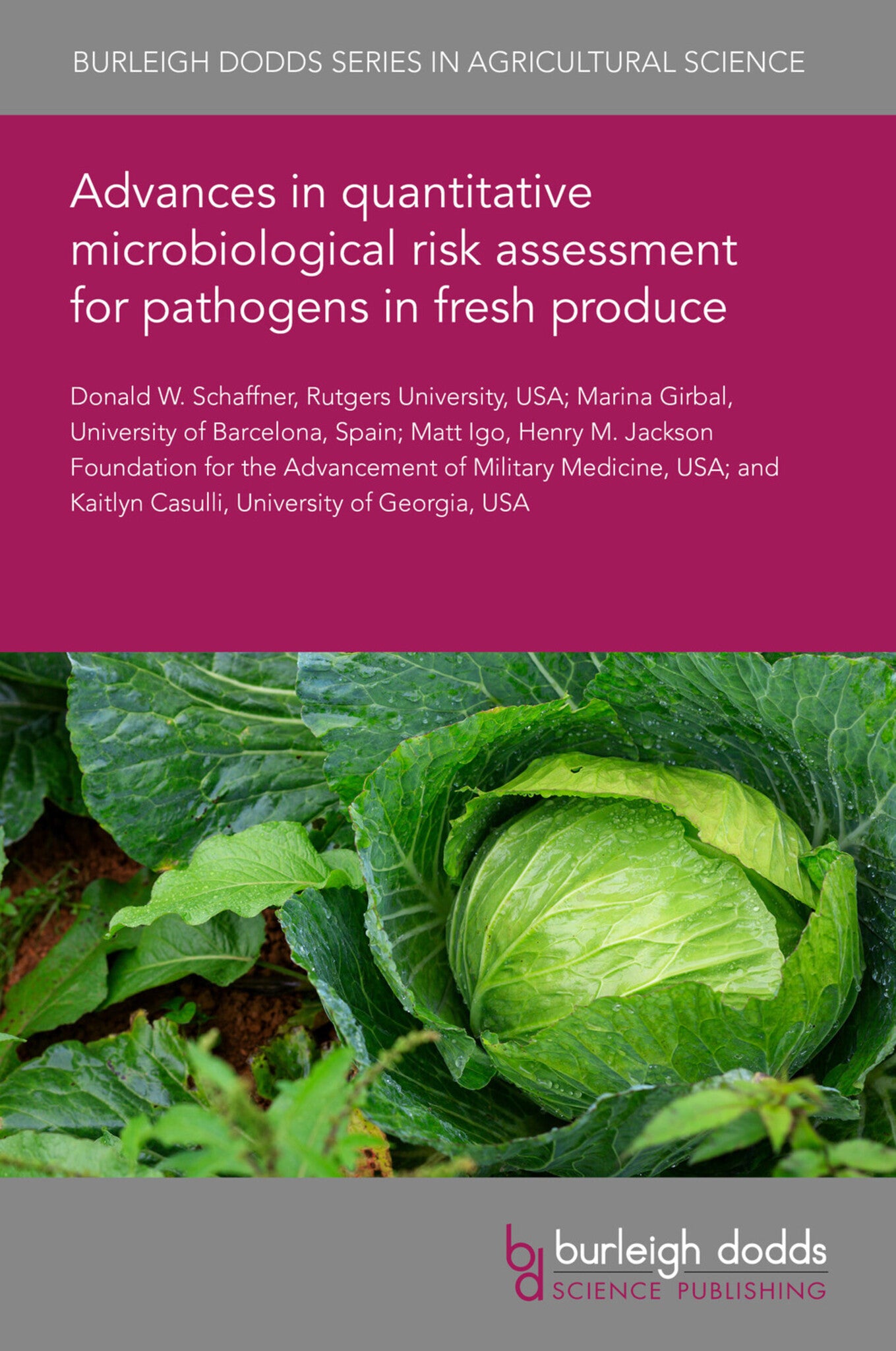We're sorry. An error has occurred
Please cancel or retry.
Advances in quantitative microbiological risk assessment for pathogens in fresh produce

Some error occured while loading the Quick View. Please close the Quick View and try reloading the page.
Couldn't load pickup availability
- Format:
-
14 August 2023

Managing the microbiological safety of fresh produce is a complicated task. Quantitative microbial risk assessments are being used increasingly as an aid to risk management by federal agencies, food industry professionals and academic researchers. This chapter takes a microorganism and historical perspective to review advances in quantitative microbial risk assessment of fresh produce. The chapter reviews microbial risk assessment research over the past 25 years specifically focused on Listeria monocytogenes, Salmonella, Escherichia coli O157:H7 and norovirus as important pathogens that have all caused outbreaks linked to fresh produce.

SCIENCE / Life Sciences / Horticulture, Commercial horticulture, TECHNOLOGY & ENGINEERING / Food Science / Food Safety & Security, TECHNOLOGY & ENGINEERING / Agriculture / Agronomy / Crop Science, TECHNOLOGY & ENGINEERING / Agriculture / Sustainable Agriculture, Sustainable agriculture, Agricultural science, Agronomy and crop production

- 1 Introduction
- 2 Microbial risk assessment of Listeria
- 3 Microbial risk assessment of Salmonella
- 4 Microbial risk assessment of E. coli
- 5 Microbial risk assessment of viruses
- 6 Conclusion and future trends
- 7 Where to look for further information
- 8 References



